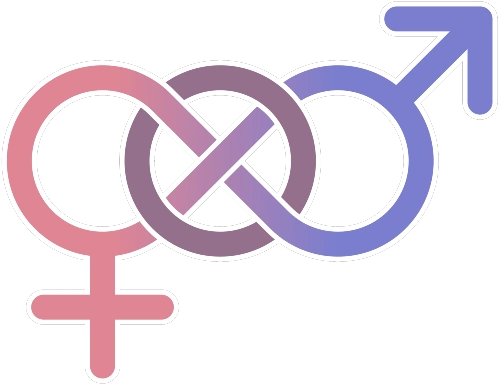m (Reverted edits by PickleMakesOcs (talk) to last version by Mr Taz) |
No edit summary Tag: Visual edit |
||
| Line 1: | Line 1: | ||
| + | I've been hiding for so long |
||
| ⚫ | |||
| ⚫ | |||
| − | '''Homosexuality''' is [[Romance (love)|romantic]] attraction, [[sexual attraction]] or [[Human sexual activity|sexual behavior]] between members of the same [[sex]] or [[gender]].<!-- NOTE: "Sex" and "gender" are not always the same thing; for example, "sex" may refer to "biological sex" (being male or female), while "gender" may refer to a person's gender identity of being a man or a woman; therefore, like the Sexual orientation, Heterosexuality and Bisexuality articles, we have included both in the lead. --> As a [[sexual orientation]], homosexuality is "an enduring pattern of emotional, romantic, and/or sexual attractions" primarily or exclusively to people of the same gender. It "also refers to a person's sense of identity based on those attractions, related behaviors, and membership in a community of others who share those attractions."<ref name="apahelp">{{cite web|title=Sexual orientation, homosexuality and bisexuality|publisher=American Psychological Association|accessdate=August 10, 2013|url=http://www.apa.org/helpcenter/sexual-orientation.aspx|archivedate=August 8, 2013|archiveurl=http://web.archive.org/web/20130808032050/http://www.apa.org/helpcenter/sexual-orientation.aspx}}</ref><ref name=amici>{{cite web|url=http://www.courts.ca.gov/documents/Amer_Psychological_Assn_Amicus_Curiae_Brief.pdf |page=30|title=Case No. S147999 in the Supreme Court of the State of California, In re Marriage Cases Judicial Council Coordination Proceeding No. 4365(...) – APA California Amicus Brief — As Filed |format=PDF |accessdate=21 December 2010}}</ref> |
||
| + | But these feelings, they're not gone |
||
| − | ==Concept== |
||
| + | |||
| + | Can I tell anyone? |
||
| + | |||
| + | Afraid of what they'll say |
||
| + | |||
| + | So I push them away |
||
| + | |||
| + | I'm acting so strange |
||
| + | |||
| + | They're so pretty, it hurts |
||
| + | |||
| + | I'm not talking about boys, I'm talking about girls |
||
| + | |||
| + | They're so pretty with their button-up shirts |
||
| + | |||
| + | I shouldn't be feeling this |
||
| + | |||
| + | But it's too hard to resist |
||
| + | |||
| + | Soft skin, and soft lips |
||
| + | |||
| + | I should be into this guy |
||
| + | |||
| + | But it's just a waste of time |
||
| + | |||
| + | He's really not my type |
||
| + | |||
| + | I know what I like |
||
| + | |||
| + | No, this is not a phase |
||
| + | |||
| + | Or a coming of age |
||
| + | |||
| + | This will never change |
||
| + | |||
| + | They're so pretty, it hurts |
||
| + | |||
| + | I'm not talking about boys, I'm talking about girls |
||
| + | |||
| + | They're so pretty with their button-up shirts |
||
| + | |||
| + | They're so pretty, it hurts |
||
| + | |||
| + | I'm not talking about boys, I'm talking about girls |
||
| + | |||
| + | They're so pretty with their button-up shirts |
||
| + | |||
| + | 'Cause I don't know what to do |
||
| + | |||
| + | It's not like I get to choose who I love |
||
| + | |||
| + | Who I love |
||
| + | |||
| + | Who I love |
||
| + | |||
| + | Who I love |
||
| + | |||
| + | They're so pretty, it hurts |
||
| + | |||
| + | I'm not talking about boys, I'm talking about girls |
||
| + | |||
| + | They're so pretty with their button-up shirts |
||
| + | |||
| + | And they're so pretty, it hurts |
||
| + | |||
| + | I'm not talking about boys, I'm talking about girls |
||
| + | |||
| ⚫ | |||
| ⚫ | |||
The concept of sexual orientation, of identifying a person based on their sexual preferences, is a social construction, not a biological one. "In ancient Rome, Latin had no equivalent translation for defining homosexuality, nor heterosexuality as an individual’s sexual nature. Gay or straight, there would be no distinction."<ref name="heritagedaily">{{cite web|year=2013|title=Roman Sex, Sexuality, Slaves and Lex Scantinia |publisher=Heritage Daily |url=http://www.heritagedaily.com/2013/08/roman-sex-sexuality-slaves-and-lex-scantinia/97996|last=Milligan |first=Markus }}</ref> |
The concept of sexual orientation, of identifying a person based on their sexual preferences, is a social construction, not a biological one. "In ancient Rome, Latin had no equivalent translation for defining homosexuality, nor heterosexuality as an individual’s sexual nature. Gay or straight, there would be no distinction."<ref name="heritagedaily">{{cite web|year=2013|title=Roman Sex, Sexuality, Slaves and Lex Scantinia |publisher=Heritage Daily |url=http://www.heritagedaily.com/2013/08/roman-sex-sexuality-slaves-and-lex-scantinia/97996|last=Milligan |first=Markus }}</ref> |
||
| Line 18: | Line 85: | ||
==Female== |
==Female== |
||
| − | |||
| − | ===Terminology=== |
||
| − | |||
| − | A female homosexual is often referred to as being lesbian. This term comes from the Isle of Lesbos. The poet Sappho was born in Lesbos and wrote poems with powerful emotional content directed toward other women. |
||
==References== |
==References== |
||
Revision as of 12:52, 23 October 2020
I've been hiding for so long
But these feelings, they're not gone
Can I tell anyone?
Afraid of what they'll say
So I push them away
I'm acting so strange
They're so pretty, it hurts
I'm not talking about boys, I'm talking about girls
They're so pretty with their button-up shirts
I shouldn't be feeling this
But it's too hard to resist
Soft skin, and soft lips
I should be into this guy
But it's just a waste of time
He's really not my type
I know what I like
No, this is not a phase
Or a coming of age
This will never change
They're so pretty, it hurts
I'm not talking about boys, I'm talking about girls
They're so pretty with their button-up shirts
They're so pretty, it hurts
I'm not talking about boys, I'm talking about girls
They're so pretty with their button-up shirts
'Cause I don't know what to do
It's not like I get to choose who I love
Who I love
Who I love
Who I love
They're so pretty, it hurts
I'm not talking about boys, I'm talking about girls
They're so pretty with their button-up shirts
And they're so pretty, it hurts
I'm not talking about boys, I'm talking about girls
They're so pretty, it hurts

Symbol of homosexuality (male version)

Symbol of homosexuality (female version)
The concept of sexual orientation, of identifying a person based on their sexual preferences, is a social construction, not a biological one. "In ancient Rome, Latin had no equivalent translation for defining homosexuality, nor heterosexuality as an individual’s sexual nature. Gay or straight, there would be no distinction."[1]
The practice of categorizing people based on sexual orientations didn't begin until the 19th century. "Before the late 19th to mid 20th centuries, there were no homosexuals. Neither were there heterosexuals, bisexuals or pedophiles. The concepts didn't exist."[2]
In the 1980s, the concept was still quite vague. "Despite the fact that the concept homosexual identity has been used extensively in the literature on homosexuality since the late 1960s, investigators have shown little concern for defining or discussing the manner in which it is used. As a result, the study of homosexual identity has been characterized by confusion, disarray, and ambiguity."[3]
Male
Terminology
A homosexual male is commonly referred to as being gay, although this term is sometimes also used for females. In Spanish, puta means a female prostitute, slut or bitch; while the male form puto literally refers to a male prostitute or to sexual intercourse, it can be used as a disparaging term for a male homosexual.
Female
References
- ↑ Milligan, Markus (2013). Roman Sex, Sexuality, Slaves and Lex Scantinia. Heritage Daily.
- ↑ "The Naked Ape" in Ek-sen-trik-kuh Discordia: The Tales of Shamlicht Anaphora Literary Press
- ↑ Cass, V.C. (1983-1984). Homosexual identity: a concept in need of definition. Heritage Daily.
This article uses Creative Commons licensed content from Wikipedia (view authors).

